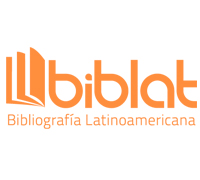Postmodernity, body and identity. The dystopias of the body as a non-place
Keywords:
Postmodernity, body and identity, non-placeAbstract
Introduction: The concept of the non-place, which defines the body through negation, lack, and its depletion, gains full significance in the postmodernist context. In this context, irrationality holds logic, and paradoxes are embraced as natural elements of personal dystopias.
Methods: This article explores the main theories of various researchers regarding the body and its categorization as a non-place across different fields of knowledge. Theoretical methods such as historical-logical analysis, analytical-synthetic approaches, and inductive-deductive reasoning are employed. Empirically, text analysis and content analysis are utilized as research methods.
Results: This study delves into the theories put forth by scholars associated with structuralism and poststructuralism. It examines how these theories not only consider the body but also encompass the postmodern context.
Conclusions: Western society, closely intertwined with the phenomena of speed and spectacle, consistently experiences non-places. Therefore, in recent years, the intellectual sphere has extensively examined the body from various perspectives and configurations. This includes exploring its relationship with identity formation and the frameworks it constructs in both Modernity and Postmodernity.
Downloads
References
AGUILAR, M. (2006). El status del cuerpo en Occidente. (Tesis Doctoral). Departamento de Filosofía, U.N.E.D.
AUGÉ, M. (2000). Los «no lugares», espacios del anonimato. Una antropología de la sobremodernidad. Barcelona: Editorial Gedisa.
AYÚS, R., EROZA, E. (2008). El cuerpo y las ciencias sociales. Revista Pueblos y Fronteras digital, 4(2).
CÁMARA, M. (2009). Uso, figuraciones y efectos del cuerpo en la literatura brasileña (1960-1980). FILO. UrL: http://repositorio.filo.uba.ar/handle/filodigital/1592
CANO, L. (2002). El postmodernismo. Temas y tesis fundamentales. En, P. GUADARRAMA, Filosofía y Sociedad, Tomo I, Editorial Félix Varela, La Habana.
DIZ, C. (2015). Políticas y tácticas del cuerpo: Retablos de la ciudad activista. (Tesis Doctoral). Departamento de Humanidades, Universidad de A Coruña.
ESTEBAN, M. L. (2004). Antropología del cuerpo. Género, itinerarios corporales, identidad y cambio. España: Ediciones Bellaterra.
FINOL, J. E. (2008). Discurso, Isotopía y Neo-narcisismo: Contribución a una Semiótica del Cuerpo.
TELOS. Revista de Estudios Interdisciplinarios en Ciencias Sociales, 10 (3), 383-402.
FINOL, J. E. (2009). El cuerpo como signo. Enl@ce: Revista Venezolana de Información, Tecnología y Conocimiento, (1), enero-abril.
FINOL, J. E. (2014). Antropo-Semiótica y Corposfera: Espacio, límites y fronteras del cuerpo. Opción, 30 (74), 154-171.
FUENTES, E. (2016). El cuerpo de la mujer en la poesía martiana. (Tesis de Licenciatura). UCLV, Santa Clara, Cuba.
LE BRETON, D. (2002): Antropología del cuerpo y modernidad. Buenos Aires: Editorial Nueva Visión.
PORTER, R. (1996). Historia del cuerpo. En: P. BURKE, Formas de hacer historia. (258-269). Editorial Alianza Universidad, Madrid.
PROBYN, E. (2005). Body. En: G. RITZER (editor), Encyclopedia of Social Theory, Vol. 1, University of Maryland.
REVILLA, J. C. (2003). Los anclajes de la identidad personal. Athenea Digital, Revista de Pensamiento e Investigación Social, (4), 54-67.
RODRIGO, M., Y MEDINA, P. (2003). Postmodernidad y crisis de identidad. IC, Revista Científica de Información y Comunicación, (3), 126-145.
RODRÍGUEZ, M. (2009). La deconstrucción del cuerpo femenino: el no-lugar en el arte. (Ponencia). I Congreso Universitario Andaluz «Investigación y Género». Sevilla.
SÁNCHEZ-PALENCIA, C. (2011). De cuerpo presente: prótesis, pliegues y la nueva carne. Representaciones de la Postmodernidad: una perspectiva interdisciplinar. Sevilla: ArCibel Editores.
TREJO, L.B. (2015). Corrientes y perspectivas en las investigaciones de la antropología del cuerpo: Acercamiento a su historia y desarrollo. (Tesis de Maestría). Universidad «Carlos Rafael Rodríguez», Cienfuegos, Cuba.
Downloads
Published
How to Cite
Issue
Section
License
Copyright (c) 2023 Azalea de la C. Santos Pulido, Eimy Fuentes Leandro

This work is licensed under a Creative Commons Attribution-NonCommercial 4.0 International License.
Usted es libre de:
Compartir — copiar y redistribuir el material en cualquier medio o formato
Adaptar — remezclar, transformar y construir a partir del material
La licenciante no puede revocar estas libertades en tanto usted siga los términos de la licencia
Bajo los siguientes términos:
Usted es libre de:
Atribución — Usted debe dar crédito de manera adecuada, brindar un enlace a la licencia, e indicar si se han realizado cambios. Puede hacerlo en cualquier forma razonable, pero no de forma tal que sugiera que usted o su uso tienen el apoyo de la licenciante.
NoComercial — Usted no puede hacer uso del material con propósitos comerciales.
No hay restricciones adicionales — No puede aplicar términos legales ni medidas tecnológicas que restrinjan legalmente a otras a hacer cualquier uso permitido por la licencia.


















